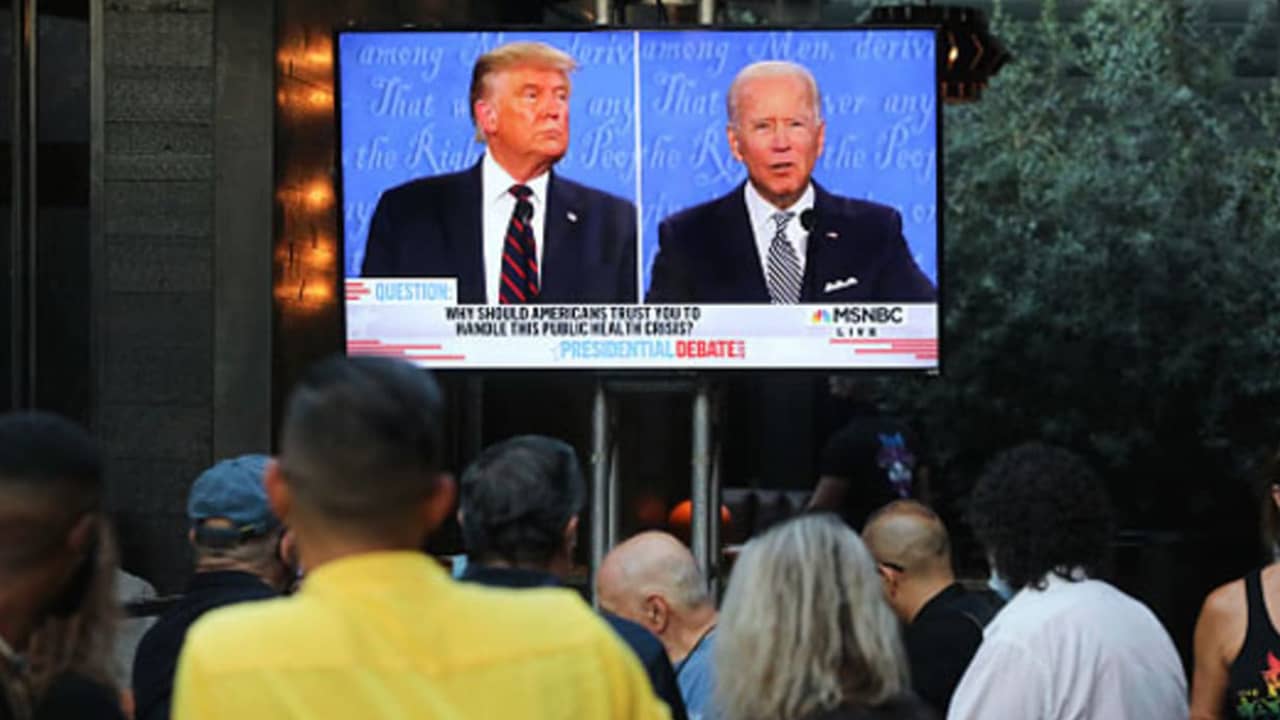
People sit and watch a broadcast of the first debate between President Donald Trump and Democratic presidential nominee Joe Biden with socially distanced outdoor seating at The Abbey on September 29, 2020 in West Hollywood, California.
Mario Tama | Getty Images
Welcome to the most expensive election in history.
Spending in the 2020 contest is expected to reach a record-shattering $10.8 billion, according to the Center for Responsive Politics, a nonpartisan group that tracks money in politics.
That total estimated spending amount reflects the presidential and congressional races. So far, CRP noted, the 2020 election has seen $7.2 billion in spending. The group expects another bump once third-quarter fundraising results are released this month.
To compare, the 2016 campaign cost $7 billion, adjusted for inflation.
“The 2018 election smashed fundraising records for midterms, and 2020 is going to absolutely crush anything we’ve ever seen — or imagined — before,” Sheila Krumholz, executive director of CRP, said in a statement. “This is already the most expensive presidential election in history and there are still months of election spending to account for. The unanswered question is whether this will be the new normal for future elections.”
CRP said the presidential race will cost nearly $5.2 billion. Overall presidential spending totals through the cycle are already at $3.7 billion and breaking records.
The group expects $5.6 billion to be spent on House and Senate races, a 37% increase from the 2016 campaign. Democrats are pushing to seize control of the Senate after winning a House majority in 2018. The Cook Political Report sees seven Republican-held Senate seats as either lean Democrat or a toss-up.
While the coronavirus pandemic has led to campaigns changing how they connect with voters and donors, CRP noted, millions of dollars are being spent on digital ads that, in part, encourage voters to donate or request mail-in ballots.
A separate study led by the Wesleyan Media Project in conjunction with the Center for Responsive Politics shows that former Vice President Joe Biden’s campaign has been outpacing President Donald Trump’s in TV and digital ad spending since Sept. 5. Biden’s team has spent more than $94 million on TV ads while Trump’s campaign has invested $41 million over the past month.
Overall, Trump has largely outspent Biden on digital ads since April. Yet the Democratic nominee has recently started to outpace the president. Since early September, the study shows that team Biden has spent just more than $32 million on Facebook and Google ads, while Trump has spent over $23 million.
Biden and his DNC fundraising committees went into September with $466 million on hand, a campaign aide previously told CNBC. Trump’s campaign spokesman has said that the team, combined with the RNC, had $325 million on hand going into September. Biden and Democrats have recently seen a surge in fundraising both in the wake of Supreme Court Justice Ruth Bader Ginsburg’s death and the debate between the two candidates.
The data shows that Democrats are currently outspending Republicans this cycle, even when it removes the massive investments by billionaires and former presidential candidates Mike Bloomberg and Tom Steyer. Bloomberg ended up spending more than $1 billion on a campaign that won just under 60 delegates and the American Samoa caucuses.
Democratic candidates and affiliated committees, according to CRP, have so far accounted for just under 54% of the total spending. Republicans and their groups have contributed 38.9% of the overall spending spree.
This cycle, similar to the 2018 campaign, is seeing a key boost from women donors.
Women have so far in the 2020 cycle contributed nearly $1.7 billion across the political spectrum, CRP said. That total accounts for 43% of political donors in the election and surpasses the $1.3 billion given by women in 2016.
Small-dollar donors, those who have contributed $200 or less, have become more prominent since 2016. Those donations account for 22% of all campaign fundraising this cycle, CRP said. That’s a jump of 14% from four years ago.
Candidates’ self funding accounts for nearly 18% of the overall fundraising, the group said.




